How to Take Care of Fruit Trees
- September 19, 2024
- 0 comment
Caring for fruit trees involves more than just planting a tree and waiting for it to bear fruit. Successful fruit tree care is a blend of science, diligence, and patience. Whether you have a few fruit trees in your backyard or manage an orchard, proper care is essential to ensure healthy growth and a productive harvest.
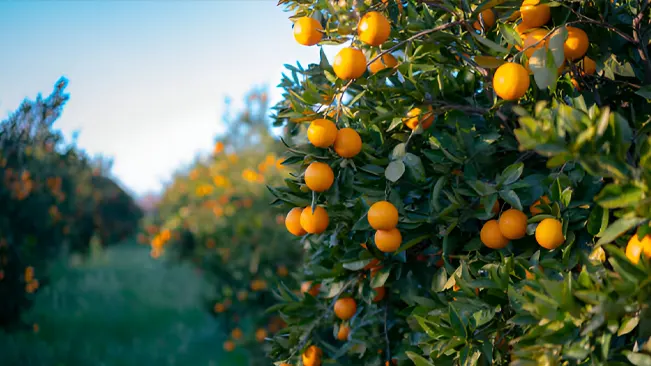
This guide will provide a detailed, step-by-step approach to caring for fruit trees, from planting and watering to pruning and pest control.
Table Content
- Choosing the Right Fruit Trees for Your Environment
- Planting Your Fruit Tree
- Watering Fruit Trees
- Fertilizing Fruit Trees
- Pruning for Health and Productivity
- Pest and Disease Control
- Protecting Fruit Trees from Weather Extremes
- Thinning Fruit
- Harvesting Your Fruit
- Seasonal Care
1. Choosing the Right Fruit Trees for Your Environment
Before you start, selecting the right tree is crucial. Every fruit tree species thrives in specific climates and soil conditions. Understanding your region’s hardiness zone, soil composition, and weather patterns will guide you toward the best-suited fruit trees for your garden.
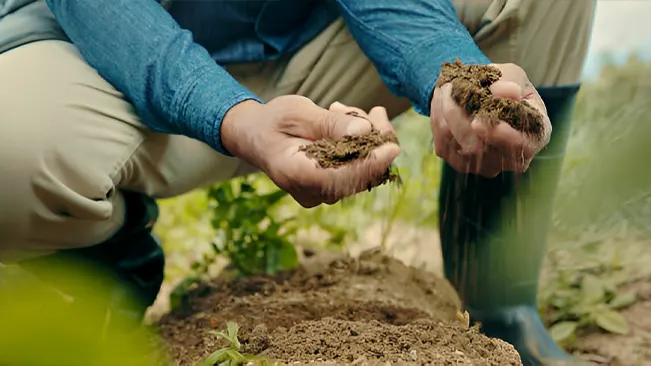
- Climate Considerations: Citrus trees, such as lemons and oranges, thrive in warm, sunny climates, while apple and pear trees prefer cooler temperatures.
- Soil Conditions: Well-draining soil is essential for almost all fruit trees. Test your soil to determine if it’s acidic, alkaline, or neutral, and choose trees that match these conditions.
- Pollination Needs: Some fruit trees are self-pollinating (like peaches), while others (like apples) require cross-pollination from another tree of the same species nearby.
2. Planting Your Fruit Tree
Proper planting sets the foundation for your tree’s growth. If planted incorrectly, even the healthiest tree may struggle to grow.

- Timing: Plant fruit trees in early spring or late winter when the tree is still dormant. This reduces the stress on the tree and allows it to establish roots before the growing season.
- Spacing: Ensure there’s ample space between your fruit trees to allow sunlight penetration and airflow. Crowded trees can compete for resources and are more susceptible to disease.
- Hole Depth: Dig a hole twice as wide as the root ball but no deeper. The tree should sit at the same depth it was in the nursery, with the graft union (where the rootstock and scion join) above the soil line.
3. Watering Fruit Trees
Water is essential for the survival of any plant, and fruit trees are no exception. However, overwatering can be just as harmful as under-watering.
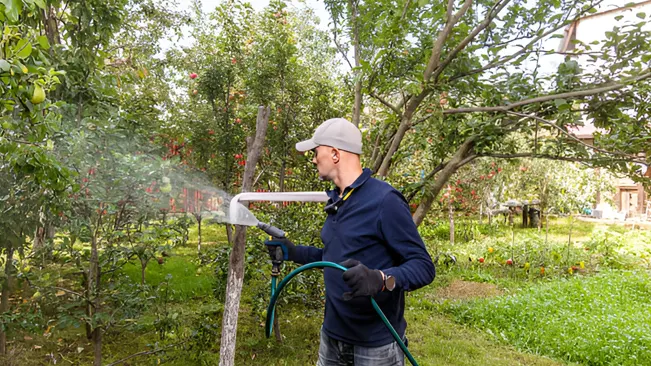
- Establishing Young Trees: For newly planted trees, deep watering is crucial to encourage the roots to grow downward. Water your tree deeply once or twice a week for the first year, depending on rainfall and temperature.
- Mature Trees: Once established, mature fruit trees require less frequent watering. Water deeply every 10-14 days, especially during dry spells. Always adjust your watering schedule based on your region’s climate.
- Mulching: Apply a layer of organic mulch (like wood chips or straw) around the base of your tree. This helps conserve moisture, reduces weed growth, and regulates soil temperature.
4. Fertilizing Fruit Trees
Fertilization provides essential nutrients that your fruit trees may not get from the soil alone. However, too much fertilizer can lead to lush foliage but poor fruit production.

- When to Fertilize: Apply fertilizer in early spring, just before the tree begins to leaf out. This ensures that the nutrients are available during the most active growth period.
- Choosing the Right Fertilizer: Fruit trees benefit from a balanced fertilizer containing nitrogen, phosphorus, and potassium (NPK). Young trees need more nitrogen to promote growth, while mature trees benefit from lower nitrogen levels to encourage fruit production.
- Organic Options: Compost, well-rotted manure, and fish emulsion are excellent organic alternatives to chemical fertilizers.
5. Pruning for Health and Productivity
Pruning is vital for maintaining the shape, health, and productivity of your fruit tree. It helps improve air circulation, allows sunlight to penetrate the branches, and removes dead or diseased wood.
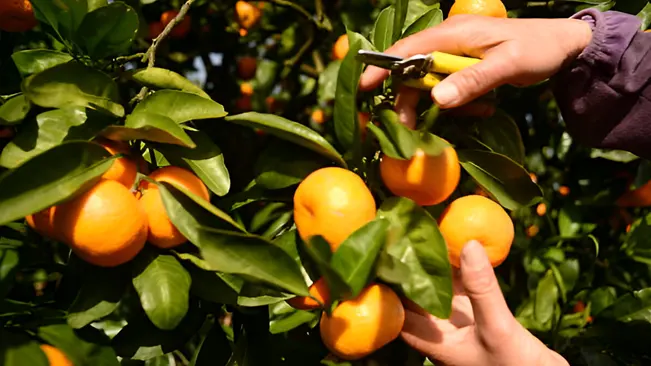
- When to Prune: Prune most fruit trees in late winter when they’re still dormant. Summer pruning can be used to manage growth, especially if a tree is overly vigorous.
- Pruning Techniques:
- Thinning Cuts: Remove entire branches to thin out dense canopies.
- Heading Cuts: Trim the ends of branches to encourage bushier growth.
- Removing Suckers: Suckers are fast-growing shoots that sprout from the rootstock. Remove them regularly as they divert energy away from fruit production.
6. Pest and Disease Control
Fruit trees can fall prey to various pests and diseases. Regular monitoring and preventive measures will go a long way in protecting your trees.
- Common Pests: Aphids, mites, and fruit flies are common pests that can damage leaves, fruit, and branches. Use organic insecticidal soap or neem oil as a first line of defense.
- Preventing Disease: Fungal diseases, like powdery mildew and fire blight, can affect fruit trees. Prune to improve airflow, avoid overhead watering, and consider applying copper fungicide in early spring as a preventive measure.
- Beneficial Insects: Encourage beneficial insects like ladybugs and predatory wasps to naturally control pest populations. Planting companion flowers like marigolds and nasturtiums can attract these helpful creatures.
7. Protecting Fruit Trees from Weather Extremes
Extreme weather can stress fruit trees, leading to reduced fruit production and, in severe cases, death.
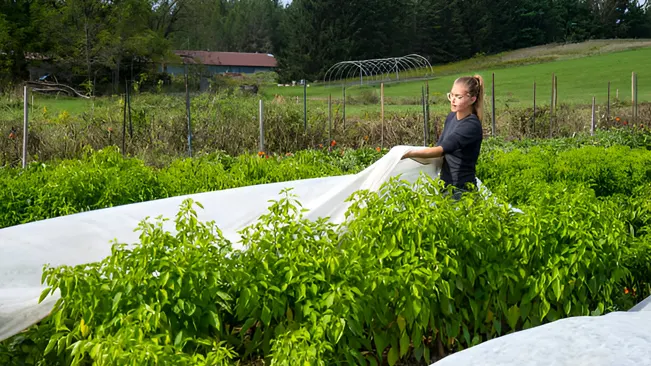
- Frost Protection: Late frosts can damage blossoms, leading to poor fruit set. Protect your trees with frost cloths or blankets when a frost is expected. For smaller trees, placing Christmas lights around the branches can provide enough warmth to prevent frost damage.
- Sunburn: In hot climates, fruit trees, especially young ones, can suffer from sunburn. Protect the trunk with a tree wrap or paint it with a diluted mixture of water and white latex paint to reflect sunlight.
8. Thinning Fruit
Thinning is the process of removing some young fruits from the tree, which may seem counterintuitive but is necessary for the overall health of the tree.
- Why Thin?: If too many fruits are left to grow, the tree may not be able to support their weight, leading to branch breakage. Additionally, thinning ensures that the remaining fruits grow larger and healthier.
- How to Thin: Once fruits are the size of a nickel, remove enough so that remaining fruits are spaced 4-6 inches apart. This practice is most commonly applied to apples, peaches, and plums.
9. Harvesting Your Fruit
There’s nothing more rewarding than harvesting homegrown fruit. However, knowing when and how to harvest is crucial to ensuring peak flavor and shelf life.
- Signs of Ripeness: Every fruit has different signs of ripeness. Apples and pears should be firm but give slightly under pressure, while peaches and plums should have a sweet aroma and slightly soft skin.
- Harvesting Techniques: For fruits like apples and pears, twist the fruit gently and pull. For stone fruits like peaches and cherries, use pruning shears to avoid damaging the branch.
10. Seasonal Care
Fruit tree care varies by season. Adjusting your care routine throughout the year ensures that your trees remain healthy and productive.
- Spring: Fertilize, prune, and monitor for pests and diseases as new growth appears.
- Summer: Continue to monitor for pests, water regularly, and thin fruit if necessary.
- Fall: Harvest ripe fruit and clean up fallen leaves and fruit to prevent diseases from overwintering.
- Winter: Prune while trees are dormant and protect young trees from frost and wind damage.
Conclusion
Taking care of fruit trees is a rewarding endeavor that requires knowledge, patience, and ongoing attention. By following the steps outlined in this guide, you’ll be well on your way to growing healthy, productive fruit trees that provide delicious harvests for years to come.
Frequently Asked Questions (FAQ)
- How often should I water my fruit trees?
For young fruit trees, water deeply once or twice a week to help establish the roots. Mature trees generally need watering every 10-14 days, depending on the climate and soil conditions. Always water deeply to encourage root growth. - When is the best time to prune fruit trees?
Late winter is the ideal time to prune most fruit trees while they’re dormant. This reduces stress on the tree and allows for healthy spring growth. Summer pruning can be used to manage overly vigorous growth. - How do I prevent pests on my fruit trees?
Regular inspection is key to preventing pests. Use organic insecticides like neem oil or insecticidal soap. Encourage beneficial insects like ladybugs and predatory wasps to keep pest populations in check. - Why is my fruit tree not producing fruit?
Lack of fruit could be due to several reasons: insufficient pollination, over-pruning, poor soil nutrition, or environmental stress. Make sure your tree is properly pollinated (if needed), fertilized, and receives the right amount of sunlight and water. - How do I protect my fruit trees from frost?
Late frosts can damage blossoms and affect fruit production. Cover your trees with frost cloths or blankets during cold nights, and use Christmas lights or other heat sources for smaller trees to keep them warm. - What should I do with fruit that has fallen from the tree?
Remove fallen fruit as soon as possible to prevent attracting pests or causing fungal diseases. Decaying fruit left on the ground can lead to infestations and tree health issues. - What is the best fertilizer for fruit trees?
A balanced fertilizer with nitrogen, phosphorus, and potassium (NPK) is ideal. Young trees need more nitrogen to support growth, while mature fruit-bearing trees benefit from a balanced or slightly lower nitrogen fertilizer to promote fruit production. Organic options like compost and manure work well too. - Can I grow fruit trees in containers?
Yes, many fruit trees can be grown in containers, especially dwarf varieties. Choose a large container with good drainage, use quality potting soil, and make sure the tree gets enough sunlight. Regular watering and fertilizing are crucial for container-grown trees. - How can I improve the size and quality of the fruit?
Thinning fruit is essential to ensure that the remaining fruit grows larger and healthier. Once the fruit has set, thin it so that each fruit is spaced 4-6 inches apart. Additionally, ensure proper watering, fertilization, and pest control. - How long does it take for a fruit tree to bear fruit?
This varies depending on the type of fruit tree and the growing conditions. Most trees will start producing fruit 2-5 years after planting. Dwarf varieties may bear fruit sooner, while standard-sized trees take longer.
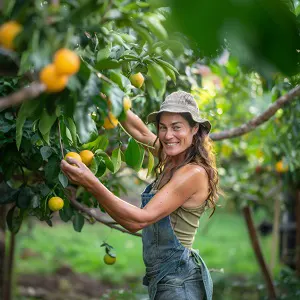
Emma Hudson
Forestry AuthorEmma's experience in farming shapes her detailed guides on gardening and farming tools, providing practical, actionable advice grounded in real-world experience. Her work targets both newcomers and experienced farmers, aiming to enhance their practices with a mix of traditional wisdom and modern techniques. By making complex agricultural concepts accessible, Emma's guides serve as valuable tools for those navigating the challenges of contemporary farming, offering strategies for sustainable success.






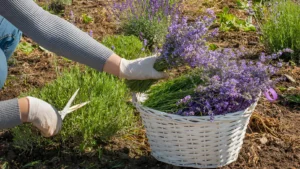


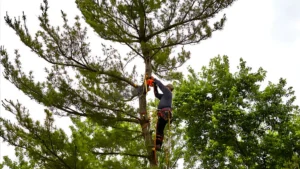



Leave your comment